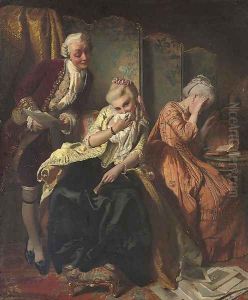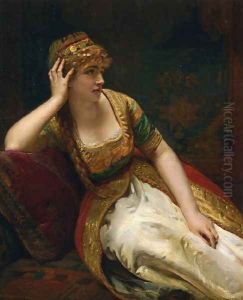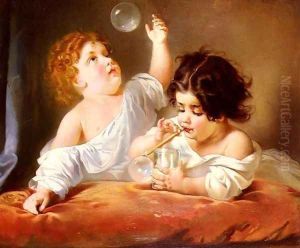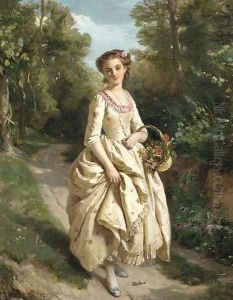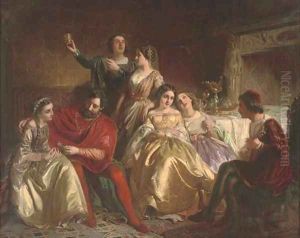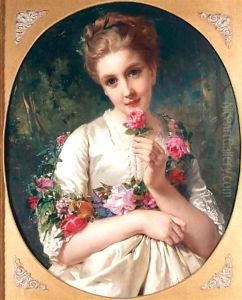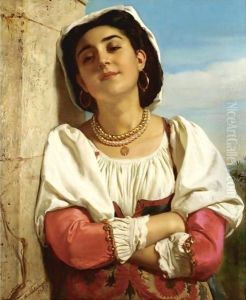Henri Guillaume Schlesinger Paintings
Henri Guillaume Schlesinger was a German-born French painter who is best known for his genre scenes, portraits, and Orientalist works. He was born on May 22, 1814, in Frankfurt am Main, then part of the German Confederation. Schlesinger showed an early interest in the arts and pursued his passion for painting by studying at the Academy of Fine Arts in Vienna.
After completing his education, Schlesinger moved to Paris, which was the center of the art world during the 19th century. He immersed himself in the vibrant Parisian art scene and began to establish his reputation as a skilled portraitist and genre painter. His works often depicted scenes of everyday life, with a particular focus on capturing the nuances of human expression and the subtleties of social interaction.
In 1839, Schlesinger's talents were recognized when he received a medal at the Paris Salon, the official art exhibition of the Académie des Beaux-Arts in Paris. This accolade helped to cement his position within the French art community. Throughout his career, he continued to exhibit at the Salon, winning further medals in 1840 and 1843.
Schlesinger's paintings were appreciated for their realism and attention to detail, as well as for their emotional depth. He often painted women and children, infusing his subjects with a sense of dignity and grace. His Orientalist works, which were inspired by the 19th-century fascination with the Middle East and North Africa, also garnered attention for their exotic subject matter and rich coloration.
Despite being born in Germany, Schlesinger spent much of his life in France, and his style was heavily influenced by French artistic traditions. His work reflects the Romantic sensibilities of his time, with an emphasis on emotion and the glorification of the past.
Henri Guillaume Schlesinger enjoyed a successful career and was awarded the Legion of Honor in 1866. He continued to paint until his later years, leaving behind a substantial body of work that continues to be studied and appreciated by art historians and collectors. He passed away on September 5, 1893, in Neuilly-sur-Seine, France, leaving a legacy as a prominent figure in 19th-century French art.
